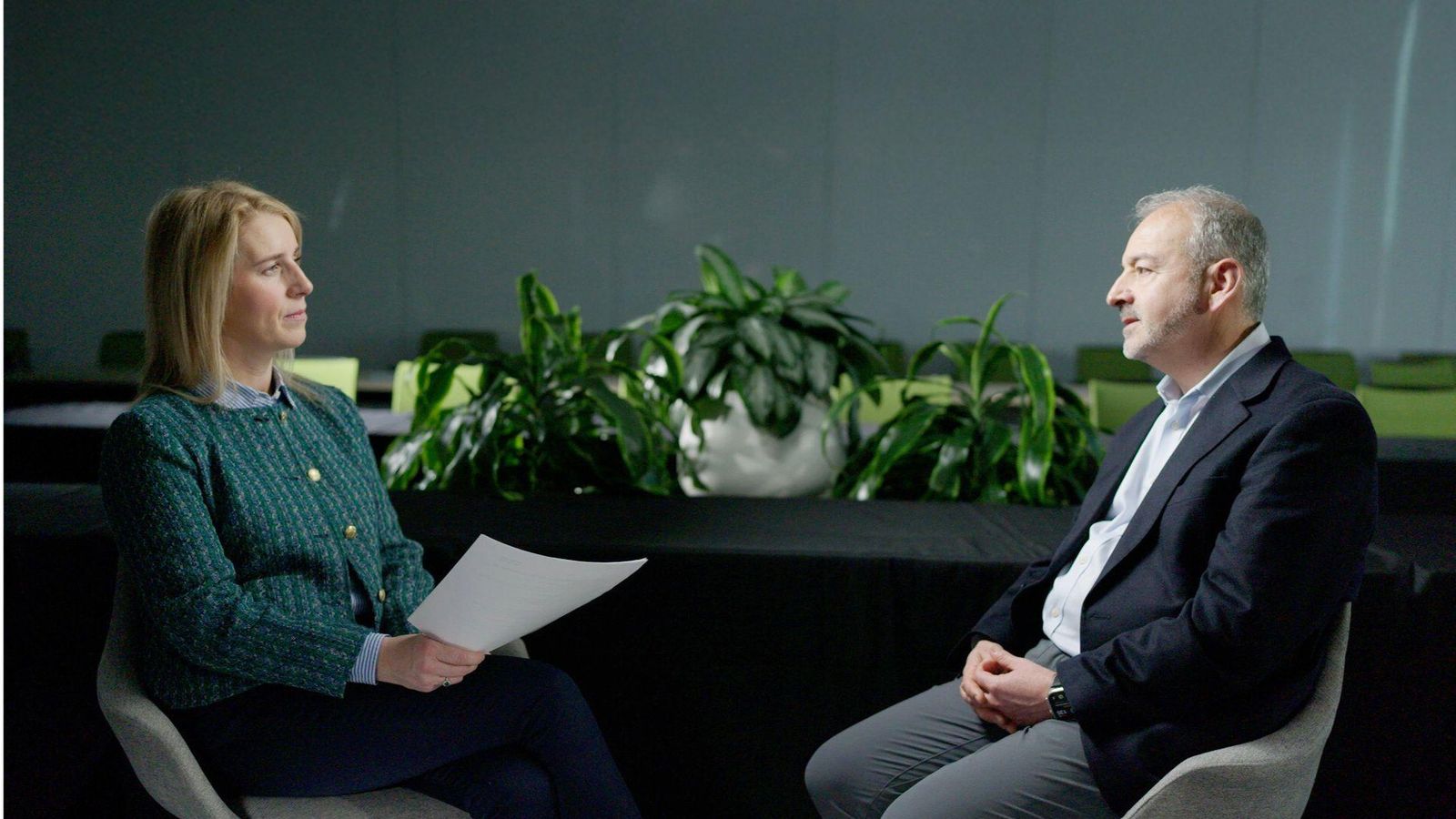More to the Story of CIDP: a Complex Neuromuscular Condition

Many people with CIDP are living with poorly managed symptoms, either because available therapies do not work for them or over time have stopped working.1 Sanofi is focused on finding an innovative way to slow or halt the damaging effects of this rare autoimmune condition, especially for those who have run out of options.
Imagine a world where simple tasks like using your phone, walking without assistance or standing up from a chair become hard to do. This is the reality for many people living with chronic inflammatory demyelinating polyneuropathy (CIDP), a rare autoimmune condition that complicates the delicate communication between nerves and muscles. CIDP inflicts a heavy burden, marked by progressive muscle weakness and sensory loss that causes numbness, tingling, and burning pain in the arms, legs, hands, and feet.1
People with CIDP may experience many unseen challenges and slowly deteriorating physical abilities that they and their doctors accept as the "new normal". There’s more to these people’s stories with CIDP than meets the eye and a diagnosis can look different in each person. Life with CIDP can become a constant negotiation with one’s own body just to get through the day. By listening to the voice of the patient community, we aim to address challenges of this community and showcase that there’s “more to the story” than what can be seen.
Current therapies offer relief for some people, but over time the effects can wear off, leaving some patients to grapple with returning symptoms and shifting their treatment plan to find a new normal. When this happens, a person is referred to as standard-of-care refractory, meaning they experience inadequate or no response to existing treatments. If left untreated, CIDP can lead to progressive disability, time lost from work or school and greatly reduced quality of life.2
This demonstrates an unmet need in available therapies for those living with CIDP.
Did You Know
1 in 3
70%
Expecting More for the CIDP Community
As the "chronic" part of the name indicates, CIDP is an ongoing condition that occurs when the body’s own immune system starts to attack the myelin sheath, a protective covering for the nerves. In CIDP, the inflammatory attack affects the peripheral nerves, which are responsible for sending signals to the far-reaching extremities of the body.5
Available therapies for CIDP, such as immunoglobulins, corticosteroids, and plasma exchange, generally have broad modulating effects and primarily target the immune system to reduce inflammation and prevent further nerve damage. These therapies also may not target specific underlying mechanisms driving physical and functional changes in CIDP,6 but they may achieve full remission in a small portion of patients.
Overall, these therapies may have undesirable side effects and may only work temporarily, for shorter periods over time or may not restore full function.
Having spent nearly 15 years on the front lines of neurological care, I’ve observed the devastating nerve damage resulting from inadequately controlled CIDP, emphasizing the critical need to explore new therapeutic options, especially for those who have experienced failure or inadequate response to current therapies.

Karen Lynch, MD, MRCPI
Global Medical Director, Neurology
An immunoglobulin infusion, for example, may be needed frequently and may take several hours to administer. This often requires visits every three to four weeks to a healthcare facility. Corticosteroids, while effective in reducing inflammation, can lead to undesirable side effects with long-term use, including weight gain, mood changes, steroid-induced diabetes mellitus, and increased risk for infections. Plasma exchange, which involves filtering the blood to remove harmful antibodies, can also be time consuming and carry the risk of complications such as bleeding and infection.5, 6
While there is no “one-size-fits-all" approach for treatment, one thing is clear: People living with CIDP deserve a standard of care therapy that meaningfully addresses their treatment needs.
Discovering New Paradigms Through Scientific Innovation
Scientific innovation offers hope for uncovering new approaches that may transform the care paradigm for more people living with neurological conditions and target the underlying mechanisms that cause peripheral nerve damage.
While the exact cause of CIDP is not fully understood, research suggests that one mechanism may involve the complement system, a complex cascade of proteins that plays a crucial role in immune responses. In CIDP and other autoimmune diseases, this system can become overactivated, leading to the inflammation that damages nerves.7
Sanofi is investigating a different approach, recognizing that inhibiting the complement system may offer a therapeutic strategy to address the underlying disease mechanisms of CIDP. This innovative approach has the potential to not only alleviate symptoms, but also to slow or halt disability accumulation in CIDP.8
In two separate Phase 3 global clinical trials – MOBILIZE and VITALIZE – Sanofi is enrolling CIDP participants to evaluate an investigational antibody in people who respond to current therapies and those who do not. Through the clinical program, Sanofi seeks to deliver a first-in-class, targeted therapy to help address unmet needs for people living with CIDP.
Learning More from the Community
While clinical research plays a vital part in advancing science, it only tells part of the story. To achieve a deeper understanding of rare conditions, clinical research must also include the perspectives of the community.
We represent the real-world experiences of people living with CIDP and other related conditions. Such insight can ensure that research remains highly relevant, reflecting the aspects of disease that matter most to the community.

Lisa Butler
President and CEO, GBS-CIDP Foundation International
The collective experiences of patients and care partners represent invaluable insights that can inform the ways clinical studies are designed, improving how the signs, symptoms and functional limitations of specific diseases are evaluated to better assess treatment outcomes.
Sanofi is committed to listening to the voices of the community and ensuring that patient-guided perspectives drive the future of clinical research.
For CIDP, that future hinges upon innovative targeted solutions that restore function and provide sustained relief of symptoms, allowing people to live for the moment not the disease.
Explore More
Neuroimmunology Unlocks the Mysteries of the Brain
Neurology Research and Development
Find a Clinical Trial
References
- Querol L., et al. J Neurol. 2021;268(10) :3706-3716
- Dalakas M., Nat Rev Neurol. 2011;7(9):507–517.
- Cocito D., et al. Eur J Neurol. 2010;17(2): 289–294
- Mair D., et al. Journal of Neurology, Neurosurgery & Psychiatry. 2025;96:38–46
- Brun S., et al. Immuno. 2022;2(1):118–131
- Rajabally Y.A. Immunotargets Ther. 2024;13:99–110
- Querol L., et al. Neurotherapeutics. 2022;19(3):864–873
- Querol L, et al. PNS Oral Presentation 429, 2024.